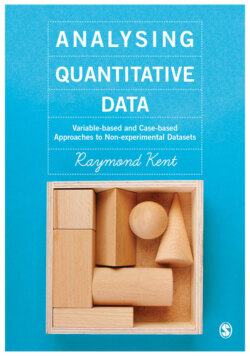Читать книгу Analysing Quantitative Data - Raymond A Kent - Страница 18
На сайте Литреса книга снята с продажи.
Key points and wider issues
ОглавлениеProperties are the characteristics of cases that the researcher has chosen to observe or measure and then record. They may be demographic, behavioural or cognitive and they may play one or more roles in a research project as descriptors, as causes or as effects. Properties are to different degrees researcher constructs that are generated directly, indirectly, derived from two or more properties or treated multidimensionally. Properties do not always constitute ‘reality’ as such, but rather tend to reflect researcher attempts to locate traces of complex systems such as the degree of bureaucracy within an organization.
Most researchers will use the term ‘variable’ rather than ‘property’, to refer to characteristics of cases. However, the next section makes a distinction between properties as variables and properties as set memberships. The distinction is crucial to an understanding of the difference between variable-based and case-based approaches to data analysis. In the alcohol marketing study, the properties were originally used as variables, which are listed in Table 1.1. These are a mixture of demographic, behavioural and cognitive variables. Some are used purely as descriptors while others may in addition play a role as dependent or independent variables. Drink status (Have they ever had a proper alcoholic drink?) is an interesting variable because it could be seen either as an outcome (e.g. What factors are associated with whether or not pupils have already had a proper alcoholic drink?), or it could be interpreted as an independent variable (How does it impact on the likelihood that respondents think they will have an alcoholic drink in the next year?). Some of the variables are measured directly (like watched television in the last seven days), some indirectly (like social class) and some are derived (total importance of brands).
